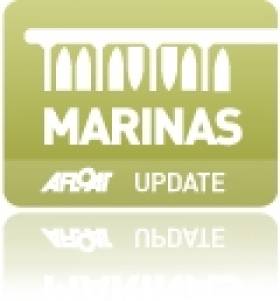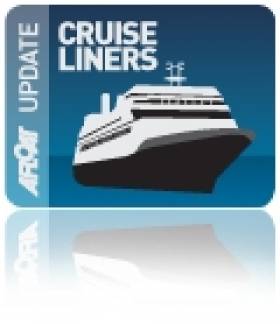Displaying items by tag: Berthing
Galway City Marina. Yacht & Boat Berths & Storage in Galway
Galway City Marina is situated in the confines of Galway Harbour and is operated by the Galway harbour company. Freshwater and electrical power is available at the pontoons. Power cars can be purchased from the harbour office during the day and also from a local pub 'Bar 8' on dock located on Dock Road. A number of visitor pontoons are available for hire during the summer and for winter layup. Sailors intending to call to Galway Harbour should first make contact with the Harbour office to determine if a berth is available, as demand is high in this quiet and beautiful part of Ireland.
2011 Port of Cork Cruise Season Draws to a Close
With these high numbers of calls and increasing passenger numbers, the overall economic contribution of the cruise business in Ireland is estimated to be worth €60 million to the island of Ireland. Cork alone contributes an estimated €20m to the local economy both directly and indirectly. In a recent survey carried out by Red C Research on behalf of Cruise Ireland, the look of a port is seen to be a key feature, with those arriving into Cork port citing this as very important in encouraging passengers to disembark and take an excursion. Over 90% of passengers visiting Cork were satisfied with their experience which exceeded their expectations.
Captain Michael McCarthy, Commercial Manager Port of Cork commented on the cruise business saying: 'with so many passengers arriving into Cobh and Cork, the impact this has on the local economy is very positive with the average spend per in-transit passenger approximately €73 per day.'
Continuing Captain McCarthy talked about Cork's potential saying that: 'In 2012 the numbers of calls are already looking very positive with 58 liners expected. As it is the 100th anniversary of the Titanic, Cobh will play an important part in commemorations and already there are three liners booked to call, which are basing their cruise theme around the Titanic.'
Feedback from cruise companies visiting Cork is very positive. Direct access to the quayside for passengers coupled with the accessibility of trains to Cork and the historic town of Cobh and its attractions on their doorstep, makes Cobh an attractive port of call. In 2010 the Port of Cork were awarded 1st place for 'Best Destination Experience (Organised)' in the world and 2nd place for 'Best Port Welcome' at the Dream World Cruise awards. These awards along with Cork being voted within the Lonely Planet's top ten cities to visit must be capitalised.
The Port of Cork has ambitious plans to grow the business to 75 calls over the next five years and already 2012 are experiencing that growth, with 58 liners expected to call. Some of these calls will stay overnight and atleast six liners will make their maiden call to Cork in 2012. This growth is attributed to the Port of Cork's investment of over €8 million to date on berthing facilities, which are the only facilities in Ireland capable of handling the largest liners afloat today.































































